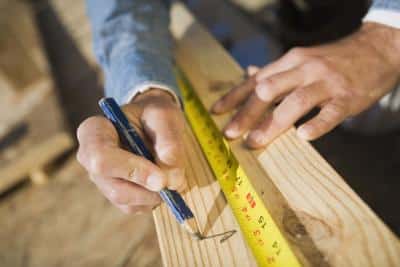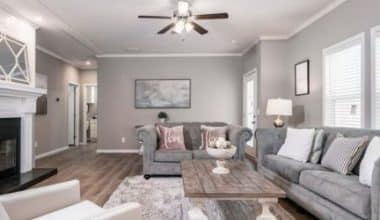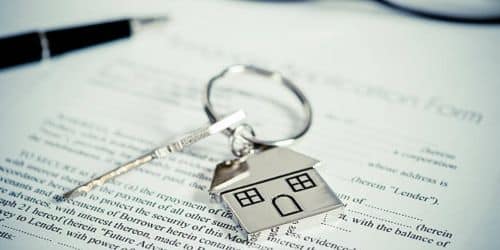There is a good chance that you have heard of leasehold improvements somewhere in the past. However, you might not be aware of what else falls under this category or what the meaning of this term actually is. In addition, the majority of individuals are curious about who is responsible for footing the bill for these alterations. If you run a small business and rent a commercial space, you will likely need to make adjustments to the space so that it meets the requirements of your company. The alterations or enhancements you made to the rental property in order to make it more desirable are referred to as leasehold improvements. This post will go over some leasehold improvement examples and the depreciation life for leasehold improvements.
What are Leasehold Improvements?
Leasehold improvements (also known as build-outs and tenant enhancements) are changes made by a leaseholder or property owner. They do this to make the room more enjoyable or helpful for the tenant. In the context of commercial real estate, leasehold upgrades are extremely prevalent. The reasoning behind these developments is that they improve a property to the point where getting tenants becomes much easier. They also make it much easy to increase tenant retention rates.
Furthermore, it’s uncommon for a commercial property to be a perfect fit for a potential tenant’s company when they first see it. Leasehold improvements refer to any required alterations to the property. Tenants may request these alterations at any point throughout the lease term, but they are frequently discussed during the initial lease agreement.
A lessor may offer incentives to make repairs or upgrades to a rental property in order to increase its desirability to potential renters. If the renter does not contribute to the cost of the renovations, the tenant is responsible for covering them and providing relevant documentation.
So, What Exactly Are Acceptable Leasehold Improvements?
The subject of “Who pays for leasehold improvements?” is a common one when it comes to leasehold improvements. These are the sorts of property enhancements that the owner typically pays for. Tenants may be eligible for rent reductions from their landlords if they pay for improvements out of their own pockets. In addition, landlords and tenants can work out a deal in which they split the price of the improvements.
Leasehold improvements have limits to specific types of upgrades. Improvements made to a building that existing tenants find useful or that attract new renters fall into this category. Floor, wall, and ceiling renovations all fall under this category.
Also, leasehold improvements do not include changes to the building’s exterior or enhancements that exclusively benefit renters in other units, despite popular perception to the contrary. This rules out things like installing a new roof, updating the elevator, or paving a sidewalk.
Furthermore, it’s a popular question among landlords and tenants: “Is signage a leasehold improvement?” In other circumstances, signage does not meet the criteria since it does not increase the practical value of the property. However, in the context of commercial real estate, it is absolutely acceptable to install signage on a property where a store or other business is located, as this is often the wish of the tenant. In a nutshell, leasehold improvements is a modification to the building that is tailored to the aesthetic or functional requirements of the tenant.
What Are the Types of Leasehold Improvements?
#1. Allowance for Building Standards
A build-out is another name for this potential action. In this scenario, the landlord offers the tenant a selection of possible upgrades. The renter has more time to focus on running their business because the landlord handles project management. Tenants don’t always get the improvements they want, which might be detrimental to their company’s success. They are responsible for paying for any extra work that arises from their decision to modify the project.
#2. Allowance for Tenant Improvements
Tenant control over this form of leasehold improvement relieves the landlord of oversight responsibilities, which might be substantial if the work involved is extensive. The landlord typically includes clauses in the lease that account for the tenant’s allowance improvement budget. A flat fee or a price per square foot is the usual format for presenting this information. Either the landlord or the tenant might make the initial payment to the remodeling or construction firm. In addition, the tenant is responsible for making up any cost overruns on a project.
#3. Turn Key
The time to make such a leasehold improvement is at the commencement of the lease. Typically, the tenant is responsible for submitting cost estimates and plans, while the landlord is responsible for supervising and paying for the work.
#4. Rent Reduction
If the tenant makes leasehold improvements, the landlord may reduce rent. Tenants, however, may be eligible for rent relief in the form of a free month or a reduced rent during specified times of the year if this provision is included in the lease. This reduces the cost of renovations for the tenant. The tenant has the same level of oversight and control over the lease upgrades as they did with the TIA. If expenses go above plan, the tenant is on the hook for the difference as well.
What Are 5 Leasehold Improvements?
The construction of leasehold improvements, often called tenant improvements or tenant buildouts, is typically the next stage after a commercial lease is signed. These alterations allow renters to better meet the needs of their individual businesses.
Leasehold upgrades can be either structural or cosmetic alterations made to a building’s interior. Leases normally do not cover upgrades to a building’s heating, ventilation, air conditioning, fire safety, or security systems, or its façade. Both the landlord and the lessee are equally responsible for paying for leasehold upgrades.
Here is a quick rundown of the many commercial leasehold improvements that are available.
#1. Equipment Setup
Leasehold improvements can also include amenities like shampoo chairs and wash tubs at a pet grooming service. Tenant improvements of this nature are typically permanent and difficult to remove after the lease’s conclusion, but they are necessary for the smooth functioning of the tenant’s business. Including leasehold improvements in a commercial lease agreement is standard practice. Landlords can rely on Clarity Commercial to assist them in negotiating tenant buildouts with prospective tenants, such as who will pay for the renovations and how much they would cost.
#2. Renovated Floors and Walls
Additionally falling under the category of leasehold improvements are facelifts for the walls and floors. It is common practice to install drywall, paint, wallpaper, or other wall treatments in rental spaces in order to adapt them for alternative uses. Changes to the floor are also a part of this. Carpeting is probably not the ideal option for a health spa, and tile flooring is probably not the best option for an office.
#3. Alterations to the Internal Structure
It is not unusual for new tenants to make structural alterations within the footprint of the property they lease when they first move in. There is a possibility that call centers will need cubicles, that legal offices will demand the creation of a lobby, and that veterinary clinics will require the creation of exam rooms and lab space.
#4. Renovated Cabinets and Work Surfaces
In a similar vein, tenants might choose to renovate their area with new countertops and shelving solutions. It may be costly to install new shelves in a store, but even a modest investment in new countertops may completely transform the appearance of a shop, clinic, or office.
#5. Installation of New Electronics, Wiring, and Lights
The installation of new phone lines, internet, and ethernet ports, as well as updated lighting, all fall under the category of leasehold improvements. Changes to the way that a space gets electricity and lit will need to be made before it can be converted from one use to another, for example from a retail store to an office space or from a medical clinic to a retail store. Also, read Financing Home Improvements: Options for Financing Home Improvements.
How Do You Record Leasehold Improvements?
Minor leasehold renovations include new paint or flooring, whereas substantial leasehold improvements include new construction, relocation, or demolition of existing walls. Leasehold improvements have a useful life of more than a year, so in the eyes of the IRS, they are capital assets. Generally, the IRS allows you to deduct the cost of a capital purchase throughout the asset’s expected useful life. Here are ways to record leasehold improvements.
- In the assets area of your general ledger, make a new account and label it “Leasehold Improvements.”
- Add the total amount of money spent on leasehold improvements to the corresponding account.
- The total amount spent on leasehold improvements should be deducted from the operating budget.
- In the accounting general ledger, under “Leasehold Improvements,” create a new account for the accumulated depreciation of the leasehold improvements.
- Before the end of the calendar year, have a look at the IRS rules for figuring out depreciation on leasehold improvements. The limits may change from year to year, with certain years allowing you to deduct more than the standard amount of depreciation if you meet the criteria set forth by the IRS for that particular year’s allowance.
- Determine annual depreciation in accordance with IRS guidelines.
- Add the annual depreciation to the accumulated depreciation account for leasehold improvements.
- Increase the depreciation expense account in the accounting general ledger to reflect the annual depreciation.
Examples of Leasehold Improvements
Typically, leasehold improvements are made on the inside of a building and include things like new fixtures, equipment, and furnishings.
Offices, stores, and factories are just some of the many commercial real estate settings that might undergo such renovations, the vast majority of which involve alterations to the structure’s walls, ceilings, and floors.
Furthermore, let’s look at some real-world instances to better illustrate the scope and limitations of the leasehold improvement definition. Take, for example, a business building that serves as a tenant’s call center. Adding cubicles for workers and phone lines for communication are examples. Likewise, the installation of brand-new rooms, specialized lighting, counter area for receptionists, carpeting, and retail shelving all count.
It’s a common question among landlords and renters alike: “Is leasehold improvement an intangible asset?” In a nutshell, leasehold improvements are not essential. These are rather overt renovations or transformations to a property. New rooms, cubicles, technology, and other property improvements are tangible assets.
Depreciation on Leasehold Improvements
Because the lessor (landlord) rather than the lessee (tenant) owns the leasehold improvements, they are amortized rather than depreciated. The right to utilize an asset during a lease term is an intangible asset because the lessee does not actually own the asset. Leasehold improvements are likewise amortized and not depreciated because they are considered intangible rights. Through the process of amortization, the total amount payable for leasehold improvements diminishes to zero over time. During the amortization accounting process, there are now several guidelines to follow:
- The Lifespan of Usefulness. If the lease’s remaining term is less than the leasehold improvements’ anticipated useful life, they should be amortized. For example, if the lease term is still five years but a recently installed light fixture is predicted to need to be replaced in three years, the asset should be amortized over the shorter term.
- Rental Period. If the leasehold improvements have a useful life that is equivalent to or longer than the lease term, then the costs associated with them should be amortized throughout the term of the lease. The amortization of a 10-year-useful-life office partition over a 5-year lease term is reasonable.
- Lease Renewal in Bas. No amount of rent reduction from the lessor will prevent a lessee from exercising their option to extend the lease. In this case, it is reasonable to assume that the lease term will be extended, allowing for the depreciation of the asset over a longer period of time up to the asset’s useful life.
What Is the Difference Between Leasehold Improvements and Building Improvements?
Improvements to a building are not the same as leasehold improvements. The latter, on the other hand, is done within the confines of the rented area and in a way that is conducive to the tenants’ best interests. Similar to leased land, leased land also yields leased buildings. It’s also possible that the building’s improvements will wrap up before a tenant’s specific area is ready.
One example of a leasehold improvement is when a landlord installs a bathroom in a tenant’s unit. Let’s pretend, though, that a whole floor of the building’s common bathrooms gets renovated. But suppose they develop further; what then? This might be thought of as a building update because it will benefit multiple tenants.
Who Pays for Leasehold Improvements?
To help tenants with the cost of renovations, landlords may offer a tenant improvement allowance or reduce tenants’ monthly rent. They may also compensate by providing the tenant with a menu of upgrade options. Overage charges are often the responsibility of the tenant.
What is the Depreciation Life for Leasehold Improvements?
Leasehold improvements are not tax deductible. However, leasehold improvements are subject to life depreciation because they are integral to the structure. Generally Accepted Accounting Principles (GAAP) stipulate a 15-year depreciation schedule for leasehold improvements, which must be reviewed annually depending on the economic life of the asset.
Should a Leasehold Improvement Be Depreciated or Amortized Over?
In accordance with accepted accounting practice, leasehold improvements are amortized rather than depreciated. This is because the law recognizes the lessor, not the lessee, as the owner of the rental improvements. The lessee has an abstract right to use the item during the lease, but they do not own it. Instead of being depreciated, intangible rights are amortized over time.
Conclusion
Leasehold improvements are obligations placed on landlords or property owners to prepare, maintain, or repair rental units and ensure that they are in compliance with applicable building codes. Painting, repairing, updating, and replacing fixtures and appliances are all examples of these types of improvements.
Because these expenditures are regarded as capital improvements, owners are unable to directly deduct them from their taxes; however, the IRS does allow owners to claim depreciation expenses over the course of the improvement’s life.
Leasehold Improvements FAQs
Is leasehold improvement a fixed asset?
Leasehold improvements are treated as fixed assets and are therefore included in the property, plant, and equipment (PP&E) portion of the balance sheet as non-current assets. Lease improvements are classified as “other fixed assets” in accordance with ASC 360 under US GAAP (Generally Accepted Accounting Principles).
Are Leasehold Improvements Depreciated or Expensed?
When a tenant makes modifications to a rental property to better suit their needs, they are making a leasehold improvement. Leasehold renovations are not tax deductible. However, enhancements are subject to depreciation because they are integral to the structure.
What Is Not Qualified Leasehold Improvement Property?
The IRS considers any improvement done on the interior of a building to be an Eligible Leasehold Property Improvement. In addition, the IRS does not consider building additions, elevators, escalators, or internal structural underpinning improvements.
Similar Articles
- GRANTS FOR HOMEOWNERS FOR REPAIRS: Tips & Guide
- BEST HOME IMPROVEMENT LOAN IN 2023
- FEE SIMPLE: Definition, Examples & What You Need
- Owner, Check Out 5 Tips On How To Rent Your Property!
- WHAT IS ROI: Definition, Formula, and How It Is Calculated
- TENANT IMPROVEMENT: What It Is, Examples & All You Should Know






